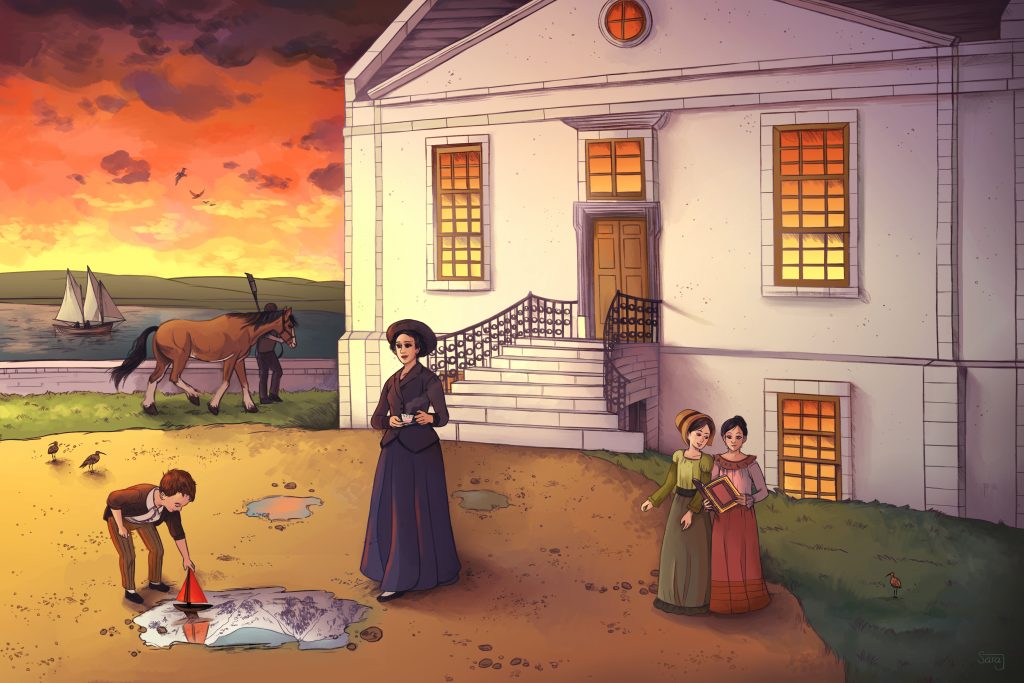Clestrain excavation digs up John Rae discoveries

New details about the family home of Orkney explorer, John Rae, unearthed this summer have been captured in an illustration by an Edinburgh-based artist.
Much of this year’s community-led archaeological activities at the Hall of Clestrain in Orphir were postponed or cancelled due to COVID-19. However, several groups managed to resume their work with safety regulations in place when restrictions eased.
Finds at the site, which is due to be restored by the John Rae society, were the remnants of a moat, which is now believed to have been a more prominent feature than previously imagined.
According to Andrew Appleby, president of the John Rae Society, the moat also contained bird bones which hint at John’s wild diet and sherds of rare sponge ware pottery that he may have used. The young John loved to go shooting, fishing and sailing; an education that would serve him well while living off the land in the Arctic with the help of the First Nations, Inuit, and Métis people. The moat was eventually transformed into a more modern drainwhich may have been built around 1851. According to the census for that year, a team of six, including one person listed as ‘a drains contractor’, stayed in the byres at Clestrain.
Mr Appleby said: “Whenever a dig is about to finish, always expect the unexpected! We finish any day now. We hope that we will be able to extend the community involvement next season COVID restrictions permitting of course.”
Dig It! – a hub for Scottish archaeology – captured these moments through their Scotland Digs Digital campaign, which gathered online and offline events for members of the public, as well as providing live updates from groups across the country with the #ScotlandDigsDigital hashtag.
Dig It! has now revealed a collection of some of the most intriguing finds from the summer, which have been digitally recreated by artists, designers and illustrators based in Scotland.
In the scene by Sara Julia Campbell, an Edinburgh-based illustrator, John’s future career is reflected in a puddle as he plays with a toy boat in the courtyard. The image also includes his mother Margaret Glen Rae and two of his sisters,
Dr Jeff Sanders, project manager at the Society of Antiquaries of Scotland’s Dig It! project, said: “Scottish archaeology is all about discovering Scotland’s stories and these are the chapters of people’s lives that we sometimes forget about, but that archaeology is uniquely placed to write.
“Scotland’s Archaeology Strategy emphasises that remains, such as the ones that have been uncovered this year, connect us to the people in the past and we believe that the work of these groups and digital artists have helped to strengthen that connection this summer.”

